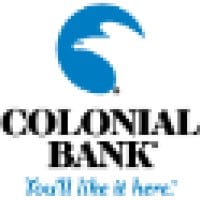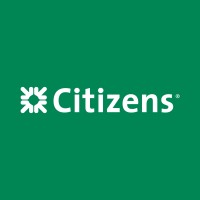Company Cyber Security Posture
NANA
NA Company Details
NA
NA
NA
NA
NA
NA
Scan still pending
NA
NA
Between 200 and 800
This score is AI-generated and less favored by cyber insurers, who prefer the TPRM score.
 NA Global Score
NA Global Score.png)

Company Scoring based on AI Models
| Model Name | Date | Description | Current Score Difference | Score |
|---|---|---|---|---|
| AVERAGE-Industry | 03-12-2025 | This score represents the average cybersecurity rating of companies already scanned within the same industry. It provides a benchmark to compare an individual company's security posture against its industry peers. | N/A | Between 200 and 800 |
Company Cyber Security News & History
| Entity | Type | Severity | Impact | Seen | Url ID | Details | View |
|---|
Company Subsidiaries

NA
Access Data Using Our API

Get company history
.png)
NA Cyber Security News
Finastra scores win in Myanmar with KBZ Bank
Kanbawza (KBZ) Bank, a privately-owned bank in Myanmar, has selected Finastra and its treasury management solution, Fusion Treasury, to enable straight-through ...
Top 10 Tech Internships Offered in Myanmar
Explore top tech internships in Myanmar with companies like Phandeeyar, Wave Money, and KBZ Bank. These programs offer hands-on experience ...
KBZ Bank Improves Credit Checking Capabilities With Integration of FinbotsAI’s CreditX
CreditX is the only AI-powered scorecard development and credit decisioning solution in the world. It is fast becoming a preferred option across ...
Misys’ FusionBanking Essence core system live at Yoma Bank
Myanmar-based Yoma Bank has gone live with Misys' core banking system, FusionBanking Essence. Yoma Bank, one of the country's largest commercial banks, ...
Digital Development and Cybercrime in Myanmar
Myanmar's mobile telecommunications network has expanded rapidly across the nation over the past decade. This expansion has led to a substantial increase in ...
Ranking the Top 10 High-Paying Tech Jobs in Myanmar
Explore the top 10 high-paying tech jobs in Myanmar. Learn about the roles, required skills, and salary prospects for each position to ...
Banking the Unbanked: KBZPay and Financial Inclusion
The key to any bank or payment service constituting a significant part of GDP is through high business use and product stickiness. KBZPay ...

NA Similar Companies

Canara Bank
Widely known for customer centricity, Canara Bank was founded by Shri Ammembal Subba Rao Pai, a great visionary and philanthropist, in July 1906, at Mangalore, then a small port in Karnataka. The Bank has gone through the various phases of its growth trajectory over hundred years of its existence. G

Bank Pocztowy SA
Bank Pocztowy to bezpieczny, polski bank mogący pochwalić się jedną z najszerszych sieci dostępu do usług finansowych w Polsce: tradycyjnych - za sprawą ok. 4700 placówek Banku i Poczty Polskiej oraz nowoczesnych - dzięki naszej nowej cyfrowej marce EnveloBank, która już w kilka miesięcy

Colonial Bank
BB&T formerly Colonial is a financial services company headquartered in Winston-Salem, NC. About BB&T Printable Version Building on a tradition of excellence in community banking that stretches back to 1872, BB&T continues to offer clients a complete range of financial services including b

Citizens
At Citizens, we recognize that the journey to accomplishment is no longer linear and that individuals are made of all they have done and all they are going to do. As one of the oldest and largest financial services firms in the United States with a history dating back to 1828, we’re committed to pro

Axis Bank
Axis Bank is the third largest private sector bank in India. The Bank offers the entire spectrum of financial services to customer segments covering Large and Mid-Corporates, MSME, Agriculture and Retail Businesses. The Bank has a large footprint of 5000 domestic branches (including extension count

Banco Sabadell
Banco Sabadell es el cuarto grupo bancario privado español, integrado por diferentes bancos, marcas, sociedades filiales y sociedades participadas que abarcan todos los ámbitos del negocio financiero bajo un denominador común: profesionalidad y calidad. Un equipo humano joven y bien preparado, do

Frequently Asked Questions
Explore insights on cybersecurity incidents, risk posture, and Rankiteo's assessments.
NA CyberSecurity History Information
How many cyber incidents has NA faced?
Total Incidents: According to Rankiteo, NA has faced 0 incidents in the past.
What types of cybersecurity incidents have occurred at NA?
Incident Types: The types of cybersecurity incidents that have occurred include .
Additional Questions
What Do We Measure?
















Every week, Rankiteo analyzes billions of signals to give organizations a sharper, faster view of emerging risks. With deeper, more actionable intelligence at their fingertips, security teams can outpace threat actors, respond instantly to Zero-Day attacks, and dramatically shrink their risk exposure window.
These are some of the factors we use to calculate the overall score:
Identify exposed access points, detect misconfigured SSL certificates, and uncover vulnerabilities across the network infrastructure.
Gain visibility into the software components used within an organization to detect vulnerabilities, manage risk, and ensure supply chain security.
Monitor and manage all IT assets and their configurations to ensure accurate, real-time visibility across the company's technology environment.
Leverage real-time insights on active threats, malware campaigns, and emerging vulnerabilities to proactively defend against evolving cyberattacks.




